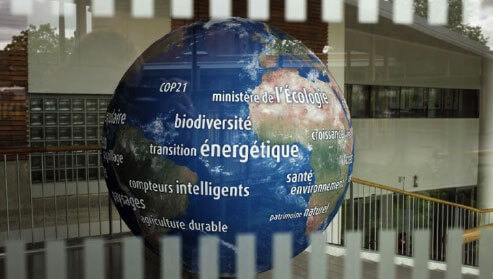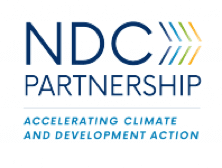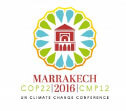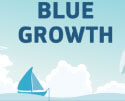In the service of NDCs
The Paris Agreement is a universal agreement in the sense that almost all the States of the planet have committed themselves to fight against climate change by the submission of voluntary national contributions, the INDCs.
It was the heart of the Paris agreement that was the fruit of the COP21. As of 4 April 2016, 161 INDCs had been received, covering 189 Parties to the Convention representing 96 per cent of the Parties to the Convention. Parties that have communicated the FADIs make up about 99% of the emissions from all Parties to the Convention. A total of 137 Parties representing 83% of the FDCs also included an adaptation component.
The aim of the Blue Belt Initiative is to contribute to strengthening the Ocean, Fisheries and Aquaculture component of the NDCs, recognizing that concrete actions can be taken both in Adaptation and Mitigation.

Fisheries and Oceans in National Contributions (NDCs)
fisheries and oceans, collateral victims of climate change but also factors of climate resilience, need to be more systematically taken into account in defining national contributions that aim to stand up to climate change. Based primarily on the framework and the tool proposed by the NDCs Partnership, our objective is to encourage the integration of the climate issue in public policies and especially to better integrate actions related to the resilience of the oceans and fisheries in the NDCs.

FACTS
The global ocean absorbs more than 90% of the heat and about a quarter of the CO2 that accumulates in the atmosphere due to human activity, modulating climate change with a significant impact on its own resilience. Excess heat and CO2 alter the physics, chemistry and ecology of the oceans while affecting valuable ecosystem services such as fisheries, coastal tourism and coastal protection.
Faced with the global challenge of the regulatory role of the oceans and the importance of safeguarding coastal zones and ecosystems in the context of the SDO 14, action is urgently needed. The IPCC's decision to produce a Special Report on the Ocean goes in this direction and will allow for the first time to build an integrated vision of the impacts of climate change on the ocean and the role of the ocean on the system Climate change itself.
There is an urgent need to implement solutions and public policies for the most vulnerable coastal regions and islands and the plans and solutions implemented are based on objective scientific evidence to ensure that adaptation measures reduce into the minimum the negative impacts of natural climate variability and climate change.
National contributions combine state mitigation commitments through projections and action schedules to reduce sectoral emissions of greenhouse gases at the national level and national adaptation targets to reduce the vulnerability of human and natural systems to the effects of actual or projected climate change. The scenarios drawn from contributions agreed at the national levels submitted by Parties upstream of COP21 show an increased risk of continuation and increase of the disruption and its consequences. Thus, the reduction efforts announced in the Paris Agreement will still produce a multiplying effect of the current risk level of impact on oceans and coastal areas. It is therefore important that the oceans integrate into the NDCs (and INDCs) in order to build a global framework for the protection of the oceans without which the Universal Paris Agreement would not achieve its objectives.
It is also important to engage in development models compatible with maintaining the resilience of oceans and coastal ecosystems.
Fisheries and Oceans in National Contributions (NDCs)
The Blue Belt initiative submitted by the Government of Morocco in the framework of the high-level action for the resilience of the oceans and the fight against climate change, acts in this context to:

Strengthen the acknowledgement of climate considerations in the development of maritime economies, particularly in the development planning and management of the fisheries sector and coastal marine areas and ecosystems, particularly in developing countries and the most vulnerable SIDs.

Link blue solutions of adaptation and mitigation with national action plans and commitments in the implementation of the objectives of the SDCs and the SDG 14.

Develop and integrate solutions for the mitigation and adaptation of fisheries sectors at national, regional and international levels for an effective contribution of fisheries policies in the implementation of the NDCs.

The development of technical capacities to manage these solutions, particularly in the most vulnerable coastal countries and islands, with a vision of taking into account the adaptation and mitigation objectives relating to the fisheries sector in the national NDCs.

The mobilization of private investments and international support for plans to implement mitigation and adaptation solutions in the fisheries sector, including conditions for removing barriers stopping the implementation.
The driving force of the Blue Belt Initiative
resides in the conviction that fisheries and aquaculture can become a model of durability, building on the principles of blue and circular economies. A package of primary concrete solutions are proposed as part of a roadmap : « Climate SMART Solutions For Fisheries and Aquaculture », targeting at the same time the adaptation and the contribution to the reduction of climate changes. A collaborative platform is proposed to accompany the implementation of the solutions, aiming the inclusion and the contact of the entirety of the components necessary to the success of the solutions : Research, Innovation, Expertise, Government Institutions, Financial Institutions and Executive Agencies.
A solution like the protection of the grass areas, the mangroves, the developpement of the algaculture, and the maintaining of the functional integrity of the wide costal marine ecosystems, can participate in the attenuation effort by playing a role of a carbonne « sink », along with maintaining the services provided by the oceans, and thus contributing to the objectives of NDCs and the sustainable developement.
RECAP OF NDCs AND BLUE BELT POTENTIAL ROLE
| African countries who have registered actions related to the fisheries sector and the oceans in their NDCs | Planned actions under the NDCs | Measures of | Connection with the Blue Belt Initiative | ||
|---|---|---|---|---|---|
| Adaptation | Reduction | Reinforcement of the capacities of technology transfert | |||
 Mauritania |
|
 |
|
||
 France |
|
 |
|
||
 Nigeria |
|
 |
|||
 Maroc |
|
 |
|
||
 Cameroun |
|
 |
|||
 Ivory Coast |
|
 |
|||
 Guinea |
|
 |
|
||
 Gabon |
|
 |
|||
 Gambia |
|
 |
|
||
 Ghana |
|
 |
|
||
 Madagascar |
|
 |
|
||
 Seychelles |
|
 |
|||
 Sierra Léone |
|
 |
|
||
 Somalia |
|
 |
|
||
 Djibouti |
|
 |
|
||

The goal of this NDC Partnership initiative, which is based on Partnership and Transparency, is to facilitate learning, collaboration and coordination for:
- The improvement of the visibility and access to support programs of the existing NDCs;
- Support programs for the better designed and more responsive NDCs;
- A better alignment between the programs, climate and development;
- An increase in the political momentum for the implementation of the Paris agreement;
With the new portal that is dedicated to the NDCs, all countries will have access to tools of knowledge, information notices, and model practices on a global scale. The partnered countries will help highlight the national priorities, link the country to the donors of the funds involved, support initiatives and provide complementary activities of shared learning as well as supporting communications as pioneering countries will give access to targeted technical assistance.
The Browser http://ndcpartnership.org/ is a searchable database of programs of financial and technical assistance available for the implementation of national plans for fighting climate change (so-called "national contributions"). It is designed to help countries identify the resources available for adaptation and mitigation, showing funding sources, capacity building, technical assistance and other types of support. The database is regularly updated as more data is available. It must be noted that the traditional sources of financing for development, which can be an important source of finance for climate action, are not included in this database.






